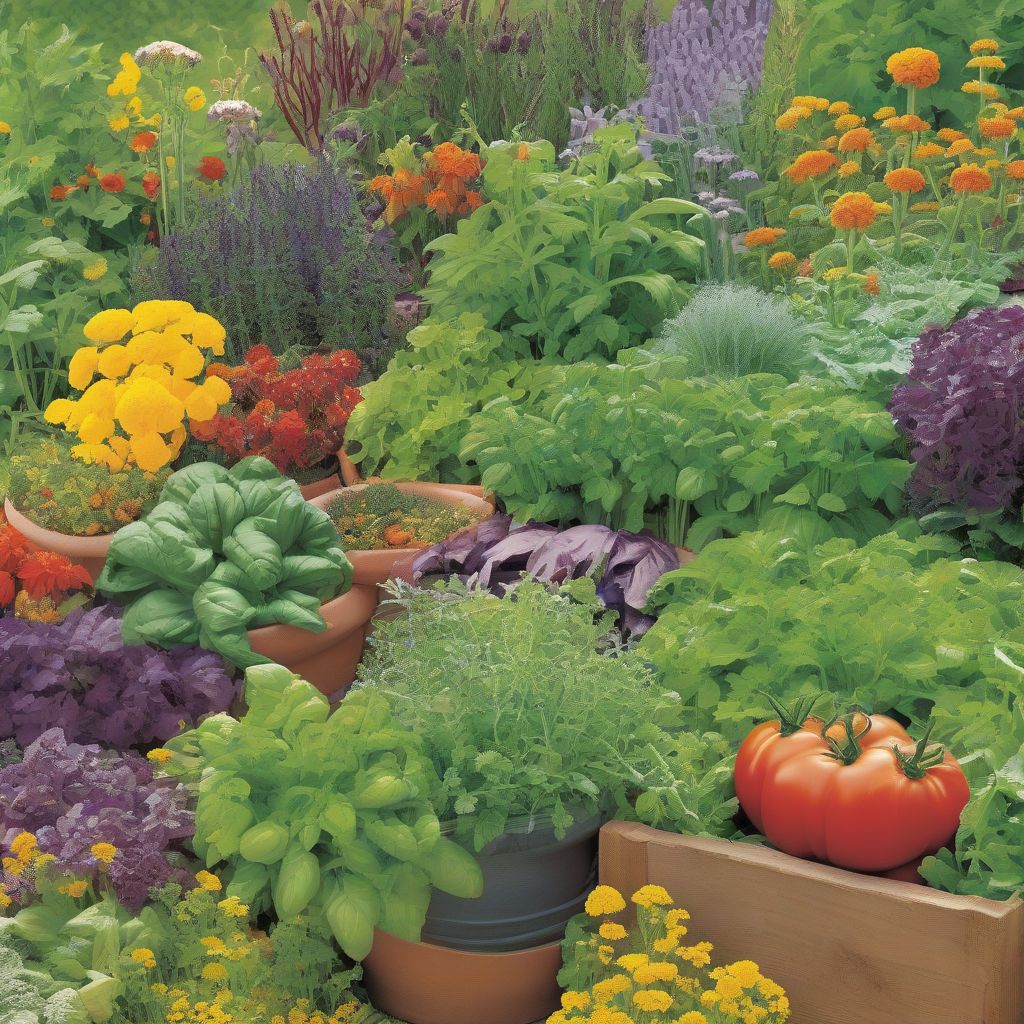Have you ever dreamt of a thriving garden bursting with vibrant vegetables, free from the pesky nibbles of unwanted guests? Companion planting, an age-old gardening technique, can help turn this dream into a reality. By strategically pairing plants, you can naturally deter pests, improve soil health, and even boost the flavor of your crops. This guide will delve into the best companion planting methods for pest prevention, providing you with the knowledge to create a harmonious and productive garden ecosystem.
Understanding Companion Planting for Pest Control
Companion planting works on the principle that certain plants emit scents or exude substances that either repel pests or attract beneficial insects that prey on them. This natural pest control method reduces the need for harmful chemical pesticides, promoting a healthier garden and a safer environment for you, your family, and the local ecosystem. As renowned horticulturist, [Insert Expert Name/Fictional Name and credentials], once said, “Companion planting is like creating a symphony in your garden, where each plant plays a vital role in maintaining balance and harmony.”
Repelling Pests Through Scent and Chemistry
Many plants possess natural defense mechanisms against pests. These defenses often manifest as strong scents that confuse or deter insects. For example, the pungent aroma of marigolds repels nematodes, whiteflies, and even some larger pests like rabbits. Similarly, the strong smell of garlic deters aphids, spider mites, and cabbage loopers. By interplanting these aromatic plants among your vulnerable crops, you create a natural barrier against these common garden pests.
Attracting Beneficial Insects
Companion planting isn’t just about repelling bad bugs; it’s also about attracting the good guys. Plants like dill, fennel, and cilantro attract beneficial insects such as ladybugs, lacewings, and parasitic wasps. These insects are natural predators of many common garden pests, providing a natural pest control service. Imagine a squadron of ladybugs patrolling your tomato plants, devouring aphids before they can wreak havoc. That’s the power of companion planting!
Best Companion Planting Combinations
Here are some tried-and-true companion planting combinations for pest prevention:
Tomatoes
- Basil: Repels whiteflies, aphids, and tomato hornworms. Basil also improves the flavor of tomatoes.
- Marigolds: Deters nematodes and other soil-dwelling pests.
- Garlic: Repels spider mites and aphids.
- Parsley: Attracts beneficial insects like hoverflies and parasitic wasps.
Cabbage Family (Broccoli, Cauliflower, Kale)
- Rosemary: Repels cabbage moths, cabbage loopers, and flea beetles.
- Mint: Deters cabbage white butterflies.
- Thyme: Repels cabbage worms.
- Nasturtiums: Acts as a trap crop, attracting pests away from the cabbage family.
Carrots
- Onions: Deters carrot root flies.
- Rosemary: Repels carrot rust flies.
- Marigolds: Repels nematodes.
- Lettuce: Provides shade for carrot roots, keeping them cool and moist.
Peppers
- Basil: Improves pepper growth and flavor, and repels aphids and whiteflies.
- Marigolds: Deters nematodes and other soil-dwelling pests.
- Chives: Repels aphids and Japanese beetles.
Beans
- Marigolds: Deters Mexican bean beetles and other soil pests.
- Nasturtiums: Acts as a trap crop, attracting pests away from the beans.
- Rosemary: Repels bean beetles.
- Summer savory: Improves bean growth and flavor.
Tips for Successful Companion Planting
- Research your specific region: The effectiveness of companion planting can vary depending on climate and local pest populations.
- Plant diversity is key: The more diverse your garden, the more resilient it will be to pests and diseases.
- Observe and adapt: Pay attention to how your plants interact and adjust your planting strategy accordingly.
- Start small: Begin with a few companion planting combinations and gradually expand as you gain experience.
- Consider crop rotation: Rotate your crops each year to further disrupt pest life cycles and improve soil health. As the old gardening adage goes, “Rotation is key to a healthy garden, free from pests and disease’s sway.”
 Companion Planting for Pest Prevention
Companion Planting for Pest Prevention
Conclusion
Companion planting offers a natural and effective way to prevent pests in your garden, promoting healthy growth and reducing the need for chemical pesticides. By understanding the principles of companion planting and implementing the right combinations, you can create a thriving garden ecosystem where plants work together to create a balanced and productive environment. Remember, successful companion planting requires observation, adaptation, and a willingness to experiment. So, start small, explore different combinations, and watch your garden flourish! Share your own companion planting successes and challenges in the comments below – let’s learn and grow together! And for further exploration, don’t forget to check out our other articles on organic gardening and sustainable living.



